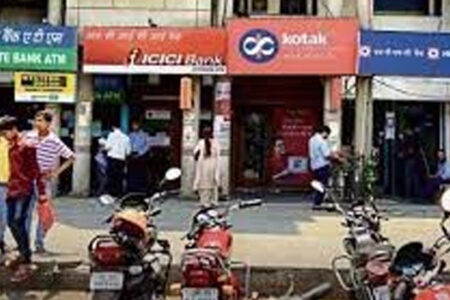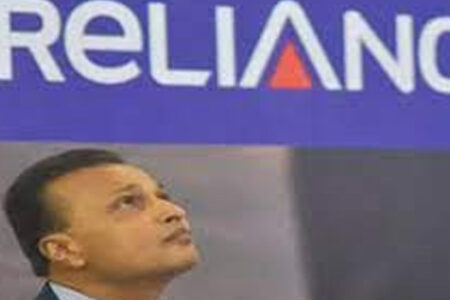It has been smooth sailing for record high borrowing of the Indian government in FY2023 so far. Till the last week (September 16), the government has raised Rs7.72 trillion without any hiccups. Net of redemptions, the net borrowing has been Rs4.39 crore.
Going by the schedule, the government is set to borrow Rs8.45 crore in the first of the current financial year, ending in September. Out of this, only Rs7,000 crore auction of a floating rate bond has been cancelled.
To get a sense of how large the borrowing programme this year is, let’s take a look at how the government had been borrowing from the market in the recent past to bridge its fiscal deficit.
In FY2019, it had borrowed Rs5.71 trillion gross amount (net Rs4.23 trillion). The next year, the gross borrowing was Rs7.10 trillion (Rs4.74 trillion). In the Covid-hit FY2021, the gross borrowing zoomed to Rs13.7 trillion (Rs11.43 trillion). Last year, it dropped to Rs11.27 trillion (Rs8,63 trillion) before rising to its historic high of Rs14.31 trillion this year (Rs11.61 trillion).
The Reserve Bank of India (RBI) has traditionally been chipping in through open market operations (OMO) to see through the borrowing programme. The OMO is both a liquidity-management as well as bond yield-management tool. When the RBI sells bonds under OMO, it absorbs excess liquidity from the system and, when it buys, it adds to the liquidity as well as manages the yield.
In FY2019, it had bought Rs2.99 trillion bonds through OMO. The figures for the next three year, till FY2022, have been Rs1.34 trillion, Rs2.5 trillion and Rs2.25 trillion, respectively. This year so far, the Indian central bank has not bought any bonds. On the contrary, it has sold Rs18,000 crore through OMO.
To get the larger picture, we must take into account the so-called state development loans (SDL) or the bonds floated by the state governments to manage their fiscal deficit. In FY2019, the gross SDL was to the tune of Rs4.78 trillion (Rs3.49 trillion); in FY2020, it rose to Rs6.35 trillion (Rs4.87 trillion) and further to Rs7.99 trillion (Rs6.52 trillion) in the next financial year. Last year, the states raised Rs7.02 trillion (Rs4.92 trillion). Till September 16 this year, the states have raised just Rs2.44 trillion (net Rs1.29 trillion) from the market, much less than the estimated Rs4.01 trillion in the first half of the financial year.
Overall, the net supply of bonds has been much higher this year compared with the previous years and the RBI is absent in the market as a buyer. Yet, the bond yield is not rising. Indeed, the 10-year bond yield had risen 61 basis points (bps) in the June quarter — from 6.84 per cent on March 31 to 7.45 per cent. At some point during the quarter, the rise was as high as 80 bps. But the yield recently dropped to 7.12 per cent. Last week it closed at 7.265 per cent. One bps is a hundredth of a percentage point.
Prices and yields of bonds move in opposite directions. When the yields rise and prices drop, the banks need to book mark-to-market (MTM) losses for those securities that are not kept in the so-called held-to-maturity (HTM) basket.
MTM is an accounting practice in which an asset is valued at the market price and not at the price it is bought. So, when the prices drop, the banks have to provide for the difference between the purchase price and market price of bonds. They had to do so in the June quarter but the tide has turned in the September quarter.
Where is the demand coming from to match such a huge supply of government bonds? Incidentally, the foreign investors are not exactly excited about Indian bonds. They have so far used only 10.15 per cent of their limit for investment in long bonds (Rs13,000 crore out of Rs1.29 trillion); in the general category, their participation is relatively higher — 17.3 per cent (Rs71,000 crore out of ~2.6 trillion). They are least interested in the SDL — haven’t even used 1 per cent of their limit.
So, what are the contributing factors to the success of the government’s market borrowing programme so far?
There are many. While foreign investors’ contribution is coming down, the combined demand of provident funds and insurance companies has doubled in the past two years. From Rs1.69 trillion central bond buying by the provident funds and insurance companies in FY2020, the quantum jumped to Rs3.37 trillion in FY2021 and Rs3.3 trillion in FY2022.
They had bought central government bonds and SDL worth Rs3.95 trillion in FY2020; the amount rose to Rs5.98 trillion in FY2021. In the last financial year, it was Rs4.81 trillion.
Indeed, the banks have also been buying bonds in a big way as the system has been awash with liquidity, till recently, and the credit offtake was lukewarm. The RBI has also encouraged the banks by progressively raising the limit of the HTM basket of bonds — from 19.5 per cent to 22 per cent and, finally, to 23 per cent for the current year. Banks do not need to mark to market for the bonds kept in the HTM basket.
The third contributing factor till last year was the RBI’s bond buying under OMO.
This year, the SDL supply has been very low in the first half as the Centre had transferred money to the states by the end of last year, upfronting the tax devolution of the current year. As there is no corporate bond supply, investors’ cash balances have been fully channelled to the government bonds, making all auctions successful and keeping the yield at a relatively low level.
Till June, the net corporate bond issuance has been negative. This means, redemptions of old bonds have been higher than fresh bond floats. Contrast this with Rs4.04 trillion net issuance in FY2022 and Rs3.59 trillion in FY2021.
Will the dream run continue in the second half of the year too, spreading cheers to the treasury floors and adding to the banks’ profits?
It may not, for many reasons.
# The SDL supply will resume as the states will run out of their cash balances. Besides, lack of transfer of states’ share of GST will also force them to borrow more.
## Liquidity in the system is shrinking. The festive season and the impending state elections will see more currency in circulation, affecting the liquidity further.
### On top of that, credit pickup of the banking system is at a nine-year high (15.5 per cent year-on-year till August 26), raising the incremental credit deposit ratio around 112. All these will reduce banks’ appetite for government bonds.
#### Any improvement in the budgeted fiscal deficit figure would have led to less borrowing by the government, but that is unlikely. Rise in subsidies for food, fertiliser and gas will eat into higher indirect tax collections.
It will not be a cakewalk in the second half of the year. The RBI may have to pitch in to see through the government borrowing and yield will rise.



